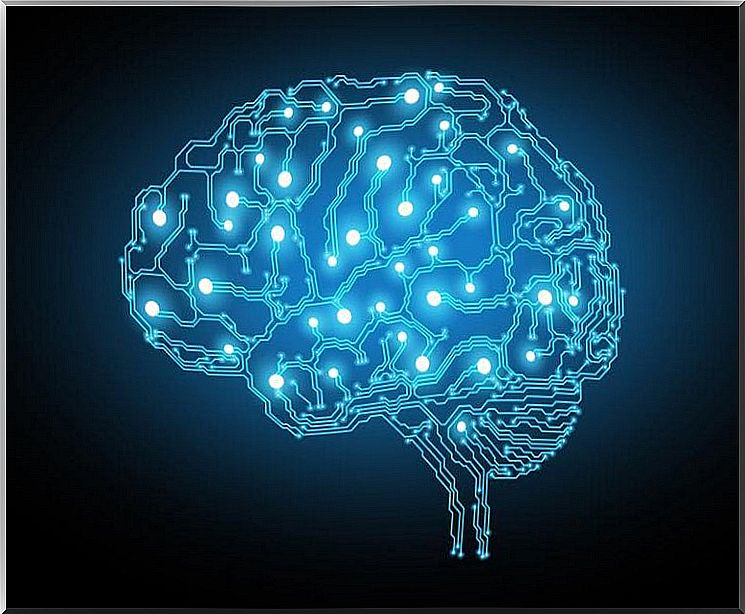The Abuse Of Drugs To Improve Intellectual Performance

Drug use has been normalizing over the past decades. Medicines of all kinds are used to be able to carry out our day-to-day tasks without problems. For example, taking a pain reliever to avoid a headache is seen as normal. One of the consequences of this is that drug abuse is becoming more and more prevalent. In other words, we have gone from taking a drug when necessary to consuming it constantly.
Currently, one of the situations in which the use of drugs is being used the most is to increase intellectual performance. But the abuse of drugs for this purpose is not recent, but has existed since the 50s or 60s. Now, what is quite new is that in the last 10 years this practice has spread notably in institutes and universities.
It is precisely about this situation that the Netflix documentary Take your pills tells us . It explains how these drugs are used to control ADHD symptoms, improve intellectual performance and the health dangers that all this implies.
In this article, we will discuss what the abuse of performance-enhancing drugs entails. We will also talk about the possible negative consequences for health (both physical and mental) of this practice. In the same way, we will reflect on what role the current educational system has in these situations; for example, in the diagnosis of attention deficit hyperactivity disorder (ADHD).
Overdiagnosis of ADHD
In the documentary Take your pills we can observe how a series of factors arise in the educational system that make it easier for many students to take medicines when they do not need them. First, we find that the most powerful factor for drug abuse in the educational context is the massive diagnosis of ADHD. This disorder is widely known today, which favors false positives. As it is a very “popular” disease, many people and health professionals end up diagnosing it when the person does not really have it.

The symptoms of ADHD are facilitated in part by the current educational model. Children and adolescents are visually, auditory and tactile overstimulated from birth. It is not uncommon to see young people of less and less age spending time with mobile phones, tablets, and video games.
Upon reaching the formal educational system, these children find themselves in an environment that becomes excessively boring. In other words, children’s brains get used to working in highly changing environments. Later, they are asked to sit still and tend for hours in a very unstimulating situation. For example, see a teacher explaining on the board.
In this situation, many children have trouble controlling themselves and end up being diagnosed with ADHD. In reality, they are showing a normal response to an educational model that has failed to adapt successfully to the demands of digital natives. We have a more dynamic and virtual environment, while the educational system is almost the same as 100 years ago. All this entails a series of problems, among which is the massive diagnosis of ADHD and the consequent abuse of drugs to control it.
The culture of effort and competitiveness in the educational environment
The culture of effort and competitiveness is another factor that motivates the abuse of drugs to improve intellectual performance. If we add to this the style of individualistic society in which we live, we have a competitive context as a result. This will make it difficult for those who have a hard time standing out to turn to outside help.
In other words, people who cannot make an effort to stand out (either due to their own characteristics or external conditions) will be forced to see psychostimulant medication as a way to solve their difficulties. All students are valued in the same way. Therefore, those who have difficulties or special needs will be harmed by this supposed “equality” of performance and evaluation criteria.
In this sense, drug abuse is more present in those people who need more time to learn a syllabus and therefore experience difficulties when they have to perform more. It would also be in those who, due to family responsibilities or financial responsibilities, cannot dedicate themselves to 100% studies.
In these situations, the need to be on the same level as others would lead some students to abuse psychostimulant drugs.
Positive effects of psychostimulant drugs
Intellectual performance enhancing drugs prevent neurons from re-uptaking two substances to communicate with each other: dopamine and norepinephrine. Dopamine is responsible for functions such as motivation and concentration, while norepinephrine increases alertness and intellectual energy.
The best known psychostimulant drugs are methylphenidate, atomoxetine, Aderall (a well-known trade name in the United States) and Concerta (a widely prescribed trade name in Spain).
Likewise, these psychostimulant drugs raise the level of brain dopamine and norepinephrine (especially in the prefrontal cortex). Thus, the effect of being motivated, alert, concentrated and entertained is obtained more easily. These effects are positive, but they are not the only ones of the drugs to improve intellectual performance.
It is necessary to remember that all psychotropic drugs have unwanted effects. Therefore, the abuse of psychostimulant drugs carries a significant risk to both mental and physical health.

Cons of the abuse of psychostimulant drugs
There are many side effects for almost all of these drugs. Thus, we can find among the most frequent tics, tachycardia, insomnia, agitation, anxiety and anorexia. In addition, there is a certain risk of dependence on them. On the other hand, using them is only a temporary solution to the student’s problem. This can understand that it is not good enough or, learn not to handle the studies correctly, since with the medication he is able to pass.
Finally, it is important to clarify that in some cases medication is necessary. This would happen if it were a real ADHD. Now, medication alone does not fix the problem. It is necessary to apply psychoeducational strategies both at school and at home. In most cases, medications should be a help, not the only solution.









